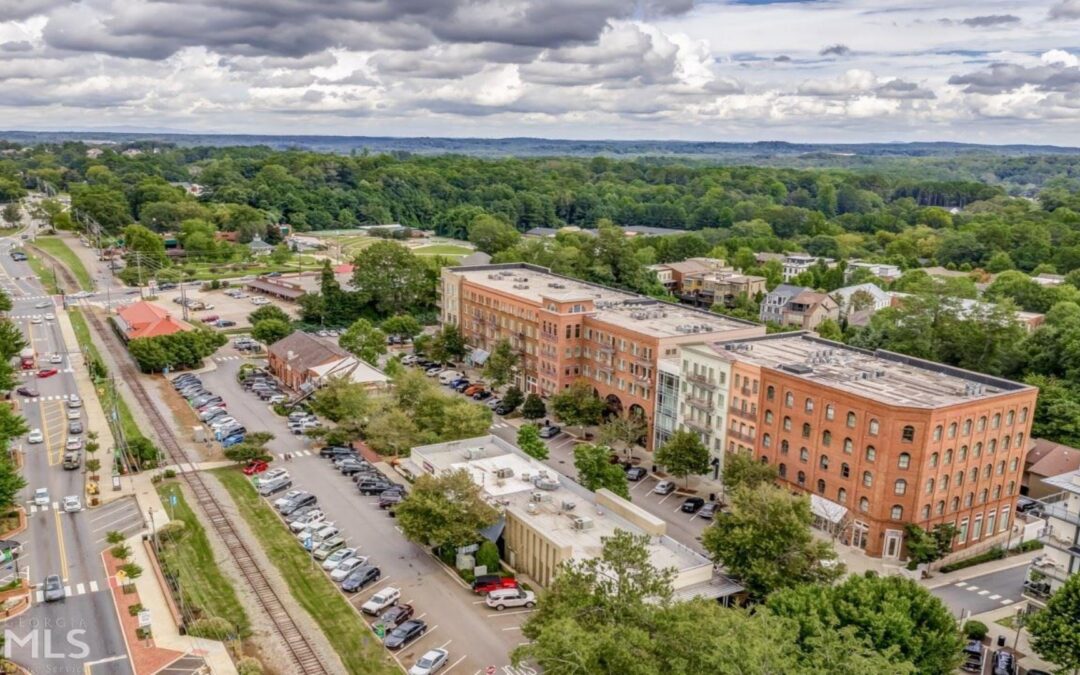Located just 30 miles north of Atlanta, Woodstock’s city limits include more than 12 square miles and over 30,000 residents.Our dynamic city is a Georgia PlanFirst Community and a recipient of Georgia Municipal Association’s Live, Work, Play City Award. Known for its vibrant downtown and world-class parks and trails, Woodstock is home to hundreds of thriving small businesses, regional shopping and tourism destinations
Pioneers began to settle in Woodstock in the early 1830s, shortly before the time that the Native Americans were being removed from the area. Postal records show that Woodstock had a postmaster beginning in 1833, and other documents confirm the organization of churches in the area at the time. The first settlements were near waterways … Little River, Rose Creek, Rube’s Creek, and Noonday Creek… where pioneers farmed the land and were largely self-supporting. While there were nearby skirmishes, the area escaped major destruction during the Civil War. There was as yet no rail line to serve as a target.
After the railroad and its depot became a reality in 1879, the little village came to life. The railroad was a lifeline, bringing industry and entrepreneurs, and allowing farmers to ship their cotton to mills far and wide. There would not have been a City of Woodstock had there been no rail line. Cityhood was inevitable, and on December 8, 1897, Georgia’s legislature granted a charter and Woodstock became an official city. The census of 1900 showed the population to be 276. Boundaries were set at ¾ mile north and south of the depot, and ½ mile east and west of the railroad tracks, making the depot the exact center of town, literally and figuratively. A new depot was built in 1912, a combination station offering both freight and passenger service. It was in operation until the 1950s.
The town prospered and grew. All manner of businesses, from cotton brokers to bankers, blacksmiths, and barbers, lined the west side of Main Street, while cotton warehouses occupied space on the east side. North of town, on Little River, Woodstock’s first industry used the cotton to produce rope, and the remains of the Rope Mill can be seen today. All over town, beautiful homes began to take shape, complemented by a school and churches and in-town farms.
Throughout the decades since, the town’s citizens have enjoyed the many positive aspects of small town life, while continuing to progress with the times. From the paving of Main Street in 1925 to the arrival of Interstate 575 in 1982, and from the notoriety of native son Lew Carpenter as the Southern League’s Atlanta Crackers’ 1940 Star Pitcher to the national spotlight as President George H. W. Bush kicked off his 1992 reelection campaign from a makeshift stage on Main Street’s sidewalk, Woodstock has made a name for itself. Two native sons, Dean Rusk and Eugene Booth, were Rhodes Scholars. One would become the nation’s Secretary of State, and the other would be a renowned physicist and a member of the Manhattan Project team who developed the atomic bomb.
The town has been blessed with dedicated physicians throughout its history. Perhaps the one name that stands above others is that of William Hiram Dean. Having moved to the area around 1850, he soon began a medical practice while also serving as a Baptist minister. His only son, Will Dean, also became a doctor and was on Woodstock’s first city council. He opened Dean’s Drug Company on Main Street in 1906, but died soon afterwards. The store serves today as the Woodstock Visitors Center, preserving relics of days gone by. During the following years there were several other doctors in the area, but the name most often mentioned is that of Dr. T. J. VanSant who practiced until retiring in 1962. Dr. Evan Boddy then opened a medical center, and in 1969 the Cherokee Atomedic Hospital was added to the complex which would later include an apothecary and a nursing home. The circular hospital structure had been on display at the 1964 World’s Fair as the “Hospital of the Future,” featuring computers and microwaves, novel items at the time. The grand opening was held on July 20, 1969, the day Americans first landed on the moon.
Although some visible Woodstock landmarks remain in place, many survive only in memory. Towne Lake Parkway was once Church Street, a narrow lane leading to “parking lots” for the churches where early worshippers tethered their horses and parked their buggies. While many original homes have succumbed to the wrecking ball, others now house businesses. A few treasured homes still serve as residences, some for descendants of the original owners. The oldest house in Woodstock, @ 1875, is the Dean House on East Main Street. The City celebrated its centennial in 1997 with parades and activities, including a Centennial Quilt, the development of the City Park, installation of plaques on historic structures, and the publication of a history book. That group is still involved with historic preservation and operates as Preservation Woodstock, Inc.
https://www.woodstockga.gov/about/history_woodstock.php

